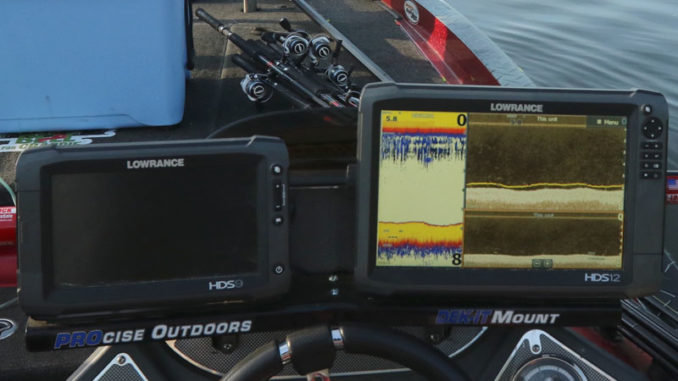
Today’s marine electronics perform more functions than those of yesteryear, and many anglers rely on them more than ever.
These products are also more efficient than older models; they can do more while using the same amount of power. And while a lot of anglers scour over the details of trolling motors, depth finders and marine batteries, many overlook one piece of the puzzle that is just as important: the wiring.
“The wiring is the one area that most boaters don’t even think about when adding electronics to their boat,” said John Long, who runs a marine sales and repair dealership. “That’s especially true when they’ve purchased a boat that has wiring already in place.”
And that causes a lot of problems, according to Long.
“People will return brand-new fish finders and trolling motors, because the first or second time on the water, they notice problems,” he said. “A lot of these problems are intermittent problems. The unit works great for a while, then, all of a sudden, it stops working. Or some functions stop working while the unit itself stays powered on. They put a meter on the battery which shows fully charged. So they think they got a bad depth finder or trolling motor.”
Live wires
Long said any time a customer calls him or brings a boat in with such problems, the first thing he asks about is the wiring from the battery to the trolling motor or depth finder.
“First, I want to know what gauge the wiring is, and how old it is. I also ask them if it’s marine-grade wiring,” he said. “The majority of people don’t know the answer to any of those questions. All they know is they have a brand-new, fully charged battery, good fuses and brand-new electronics. But they’re missing some features or losing functionality at some point during a trip.”
In the majority of those cases, Long said, the culprit is an issue with the wiring. That issue can change from one case to the next.
“If wiring is involved in any boating malfunction, it is almost always the problem, especially when everything else is brand new,” he said. “But wiring is also the hardest thing to check. You can swap out a trolling motor or a fish finder just by unplugging it and putting a new one in. Same with the battery. But the wiring is hidden under floors, sometimes runs through fuse panels and is often spliced in areas you can’t readily see. Unless you ran the wiring yourself, it’s a bit of a mystery.”
Long said checking the wiring connections, however, is fairly simple. He said you might have to open or even unscrew a panel, but once you can see those connections, you can tell whether they are corroded or broken. It’s not uncommon, especially if the wiring is several years old.
If those areas look fine, Long determines what gauge the wiring is. To do this, he looks at the jacket on the wiring.
“It will have something printed on it like ‘10 AWG Marine Grade,’” he said. “That means it is 10-gauge wiring, rated for use on boats. When it comes to wiring, the bigger the number is, the thinner the wire is. And the thinner the wire is, the less power you can run through it. Many, many, many times, that’s the problem I see.”
Gauge matters
One example Long gave was a customer who had inherited a boat and added a brand new battery and a Minn Kota iPilot trolling motor. With a fully-charged battery, everything worked fine except for the Spot Lock feature on his trolling motor.
“He could troll all day just fine, and when he hit the Spot Lock button, his trolling motor would hold him in one spot for about 30 seconds,” Long said. “But then it would release for no apparent reason. Everything else on the motor worked fine except that one feature. Minn Kota replaced the circuit card for the head unit on the motor, and he still had the same problem.”
Long checked the connections and fuse panel. They looked fine, but he said the wiring, which was in place when the customer inherited the boat, was 10-gauge. Minn Kota’s rating on that particular motor called for at least 8-gauge wiring.
“All the manufacturers — Minn Kota, MotorGuide, Humminbird, Lowrance — they all have their wiring recommendations on their websites,” he said. “They’ll tell you what gauge wire you need to run ‘X’ number of feet away from your battery. When someone buys a boat — old or new — and it’s already pre-wired, most people don’t even think about the wiring. It’s just not something they would consider could be a problem.”
Go overboard
Long said wiring is one instance where he doesn’t mind going overboard.
“In that guy’s case, the manufacturer recommended a minimum of 8-gauge wiring. I recommended 6-gauge, and he agreed. That’s overkill, but one thing’s for sure: if he ever has another problem with his trolling motor, it will not be because the wiring is too thin,” he said.


